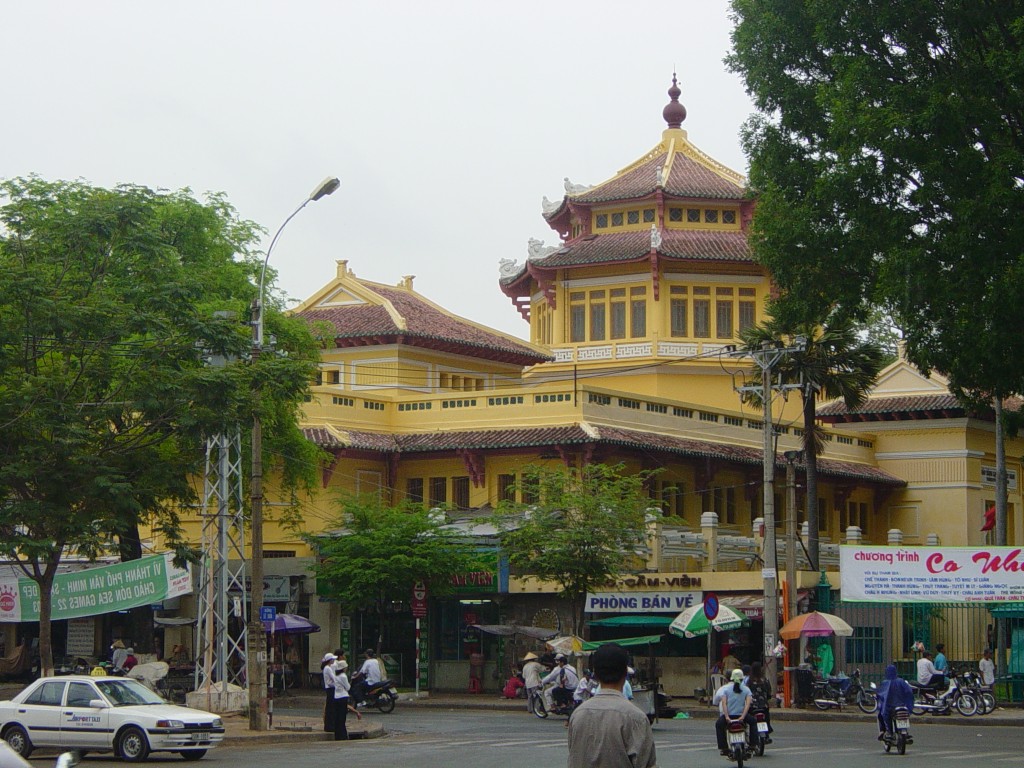
The Việt Nam History Museum in Hồ Chí Minh City, originally built in 1929 as the Musée Blanchard de la Brosse, was certainly not the first museum in the city.
One of the last museums to be set up in French Indochina, the Việt Nam History Museum in Hồ Chí Minh City was over 60 years in the making.
As early as 1866, under the auspices of Admiral-Governor Pierre-Paul de La Grandière (1863-1868), archaeological artefacts were collected by colonial government officials from ancient Khmer and Chàm sites with a view to public display in Saigon, but in the absence of a suitable building, they had to be placed in store.
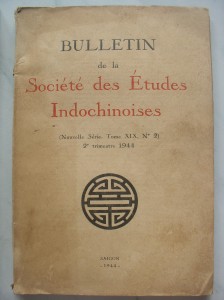
The Bulletin de la Société des études Indochinoises
Nothing was then done until January 1882, when the Colonial Council approved a proposal by a Professor Milne-Edwards to establish a “Musée d’études” (Study museum) in Saigon.
A year later, the Société des études Indochinoises (Society of Indochina Studies) was set up to carry out archaeological, artistic, ethnographic, religious, historic and geographic research on Indochina and the Far East, to publish a scholarly journal known as the Bulletin de la Société des études Indochinoises, and to encourage the Cochinchina government to establish a permanent home for its collections.
With a new Palais de justice (Law Court) then under construction, many of the artefacts were moved into the old Law Court building, a late 1860s edifice which at that time stood on the site of the current Hồ Chí Minh City Museum (65 Lý Tự Trọng). However, the project to establish that old building as a museum quickly ground to a halt. In 1884, the French Naval Ministry decided that the old Law Court should be demolished completely, and that funds earmarked for the “Study museum” should instead be used to construct a grand new exhibition hall on the same site for displaying agricultural and other trade products. . By 1887, that project was also abandoned when the hall building had to be repurposed as a palace for the newly-downgraded Lieutenant Governors of Cochinchina (see Foulhoux’s Saigon).
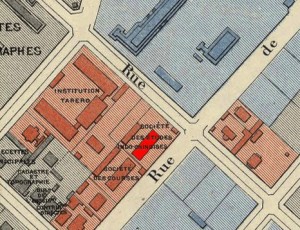
The first Société des Études Indochinoises headquarters building on the junction of rue de La Grandière (Lý Tự Trọng) and rue Nationale (Hai Bà Trưng) is marked in red in this 1898 map of Saigon
In fact, Saigon did not get a museum until 1888. In that year, two rooms of the Société des Études Indochinoises headquarters building – a Paris Foreign Missions Society (MEP) villa at 16 rue de La Grandière (Lý Tự Trọng) on the junction with Rue Nationale (Hai Bà Trưng) – were opened to the public as a small museum which housed a collection of Chàm sculptures donated to the Society by the Resident-Superior of Annam.
A decade later in 1898, the Mission archéologique d’Indo-Chine, forerunner of the École Française d’Extrême-Orient (EFEO), was founded, with its headquarters on Saigon’s rue Nationale (now Hai Bà Trưng street). In 1900 this organisation opened a second museum at 140 rue Pellerin (Pasteur street). This became home to a collection of ancient inscriptions and fragments brought from Cambodia and Champa, along with the long-stored artefacts collected in 1866 by representatives of Admiral-Governor de la Grandière. In 1904, the collection of this EFEO museum was expanded following a generous donation of sculptures and statues by Général de Beylié, Commandant of the 3rd Brigade. However, the EFEO museum in Saigon was short-lived; with the EFEO office relocated to Hà Nội as early as 1902, the museum was also closed in 1905 and most of the collection was then relocated to Phnom Penh.
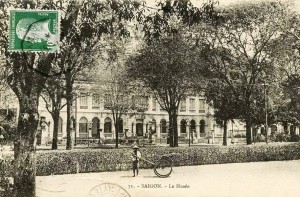
From 1917 to 1925, the Société des Études Indochinoises opened a museum in the former Hôtel du Contrôle financier building at 12 boulevard Norodom (Lê Duẩn)
Despite frequent funding problems, the small Société des Études Indochinoises museum at 16 rue de La Grandière continued in existence until 1917, when the MEP took back the villa to use as a hostel for its teachers at the nearby Institution Taberd.
The Société then relocated to new premises – an office at 1 rue Sohier (now 170 Nguyễn Văn Thủ street) in Đa Kao and a museum space in the former Hôtel du Contrôle financier at 12 boulevard Norodom (Lê Duẩn), right opposite the Cercle des Officiers.
However, just eight years later, the Société was forced to close its museum at 12 boulevard Norodom too, because “the rent exceeded its modest resources.” From 1925 to 1928, part of the collection was placed on view in a small Musée archéologique (Archaeological museum) at the Société’s rue Sohier headquarters.
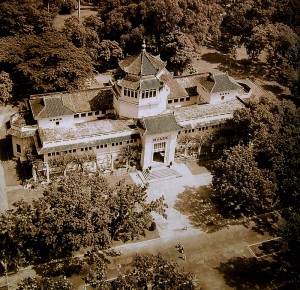
An aerial view of the Musée Blanchard de la Brosse
By this time, most other Indochinese cities already had government-run museums – Hà Nội’s had been set up in 1909, Phnom Penh’s and Tourane’s in 1919, and Huế’s in 1923 – and the continued lack of a proper museum in Saigon had become something of an embarrassment.
The event which finally spurred the French authorities to set up a museum for Cochinchina was the death in 1927 of naval pharmacist and collector Dr Victor-Thomas Holbé. Concerned that his large Asiatic art collection should not be broken up and sold at auction, the Société des Études Indochinoises agreed to solicit subscriptions to purchase it for the sum of 45,000 piastres and then to bequeath it to the government, in an attempt to persuade the authorities to build the collection a proper home.
This strategy worked, for on 24 November 1927, Cochinchina Governor Paul-Marie Blanchard de la Brosse (1926-1929) signed a decree establishing the Musée de Saigon.
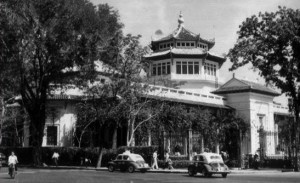
From 1956 to 1975, the “Musée Blanchard de la Brosse” was known as the National Museum of Việt Nam
Designed by architect Auguste Delaval and cited as one of only two examples of the hybrid “Oriental” or “Indochinois” architectural style to be found in the southern capital, the new museum building was constructed in 1928. Pending its completion, the Société des Études Indochinoises opened a second exhibition hall at 2 place Maréchal Joffre (now Turtle Lake), where the Holbé collection was housed temporarily under the title “Musée d’art Extrême-Oriental.”
Both collections were relocated to the new building in December 1928 and the Cochinchina museum was inaugurated on 1 January 1929 as the Musée Blanchard de la Brosse, named after the Governor who had approved its construction. For the remainder of the colonial period, responsibility for the scientific control of the museum was entrusted to EFEO. On 16 May 1956, the Musée Blanchard de la Brosse became the National Museum of Việt Nam (Viện bảo tàng Quốc gia Việt Nam) under the South Vietnamese Ministry of Education. A U-shaped extension surrounding an ornamental lake was built in 1970 to a design by architect Nguyễn Bá Lăng. Since Reunification, the museum has served as the Hồ Chí Minh City branch of the Việt Nam History Museum.
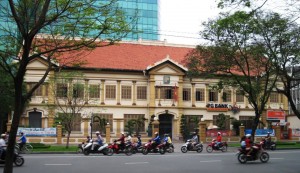
The former Hôtel du Contrôle financier building at 12 Lê Duẩn in 2010, before its demolition (photographer unknown)
Today, the former Musée Blanchard de la Brosse building is the only one of the city’s numerous museum buildings to survive. The second Société des Études Indochinoises headquarters at 1 rue Sohier (170 Nguyễn Văn Thủ) was rebuilt in the 1930s, while the former EFEO headquarters at 140 Pasteur was redeveloped in the 1990s. The villa at 16 Lý Tự Trọng survived until quite recently as an up-market French restaurant but was then demolished to make way for a boutique hotel, which, at the time of writing, is still under construction.
As for the former Hôtel du Contrôle financier at 12 Lê Duẩn, this elegant old building – latterly owned by Petrolimex – was demolished in 2010 to make way for the “Lavenue Crown” development. According to a 2011 article in Tuổi Trẻ newspaper, an architect convinced the authorities that the early 1900s building was a fairly recent “faux-colonial” structure and therefore had no heritage value.
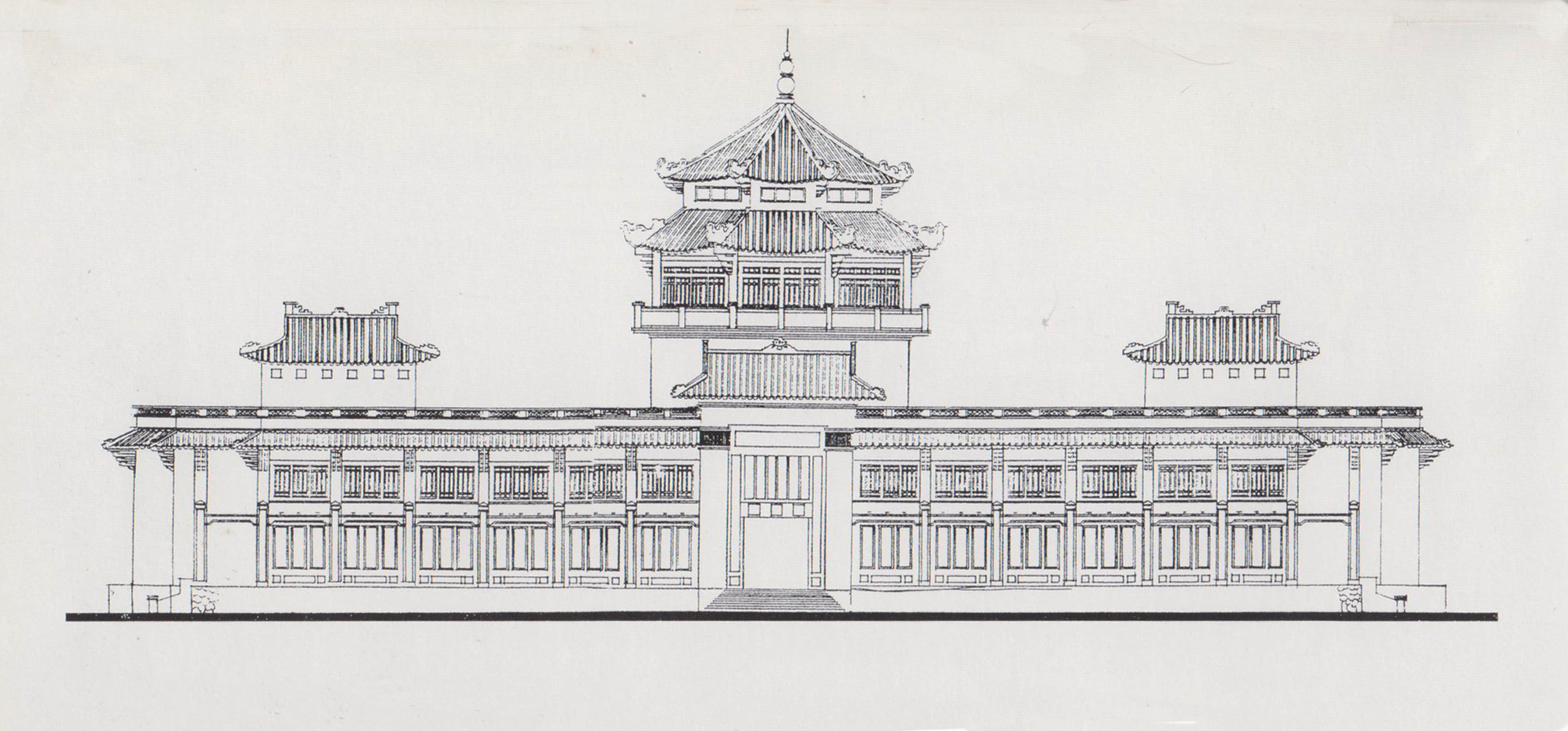
“Dessin architectural du Musée Blanchard de la Brosse,” reproduced in Pairaudeau, Natasha et al (eds), Saïgon 1698-1998 Kiến Trúc/Architectures Quy Hoạch/Urbanisme (Nhà Xuất Bản Thành Phố Hồ Chí Minh, 1998)
Tim Doling is the author of the guidebook Exploring Saigon-Chợ Lớn – Vanishing heritage of Hồ Chí Minh City (Nhà Xuất Bản Thế Giới, Hà Nội, 2019)
A full index of all Tim’s blog articles since November 2013 is now available here.
Join the Facebook group pages Saigon-Chợ Lớn Then & Now to see historic photographs juxtaposed with new ones taken in the same locations, and Đài Quan sát Di sản Sài Gòn – Saigon Heritage Observatory for up-to-date information on conservation issues in Saigon and Chợ Lớn.

